Planets and Birds On the Move!
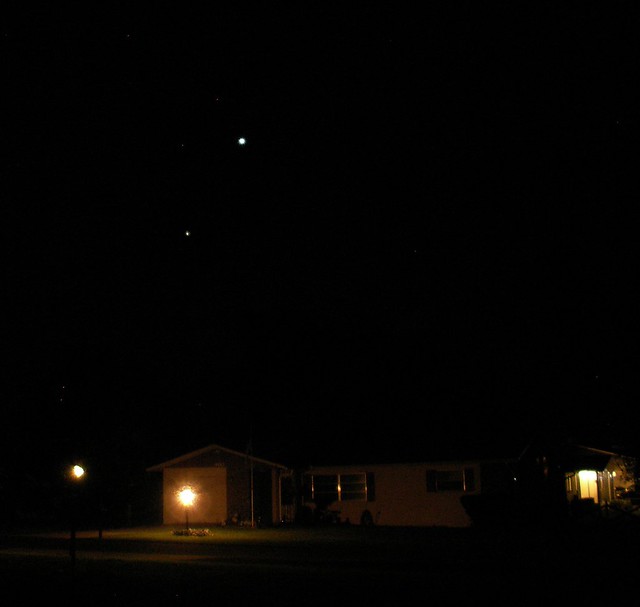
The above is from March 18. Normally I set my tripod up on the driveway, but the planets were low enough by the time I took this (9:42 p.m. Eastern) that I headed down the block, to where Venus (on the right) and Jupiter were about to set behind a neighbor's house.
I was back on my driveway on the 19th:
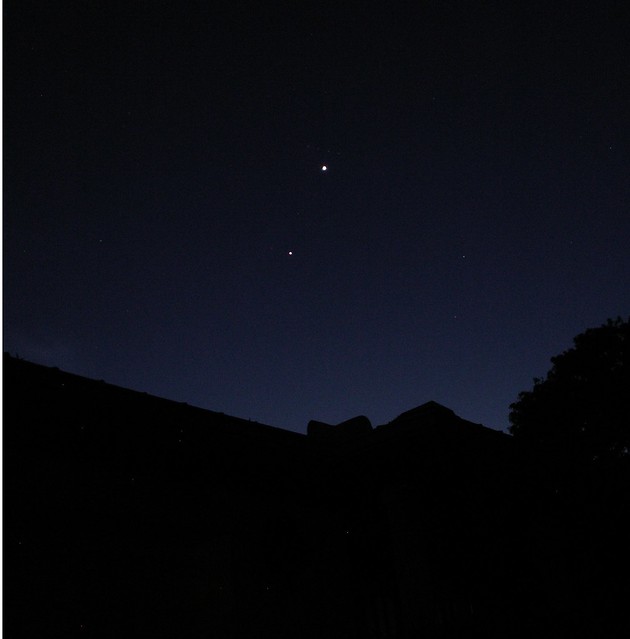
If you go to the large view, you can see four small dots in a line above Venus. They're lights from a passing aircraft.
And then, there's March 20:
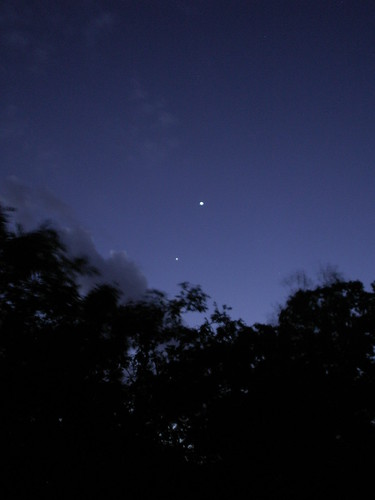
On March 22, Venus will be at 46 degrees east of the Sun and will stay there through April 1, after which time it will start dropping lower in the sky. Meanwhile, the crescent Moon will join Venus and Jupiter on March 24 (a thin crescent below the two planets), 25 (a slightly larger crescent beside Jupiter), and 26 (a larger still crescent beside Venus).
And the ibises are back in our neighborhood! I'd seen them in the county seat almost a month ago. On Tuesday a flock had stopped by our "post office pond." Mary had noticed them first. I swung the car around and parked it in a cut-away by the water, leaving my hazards flashing.
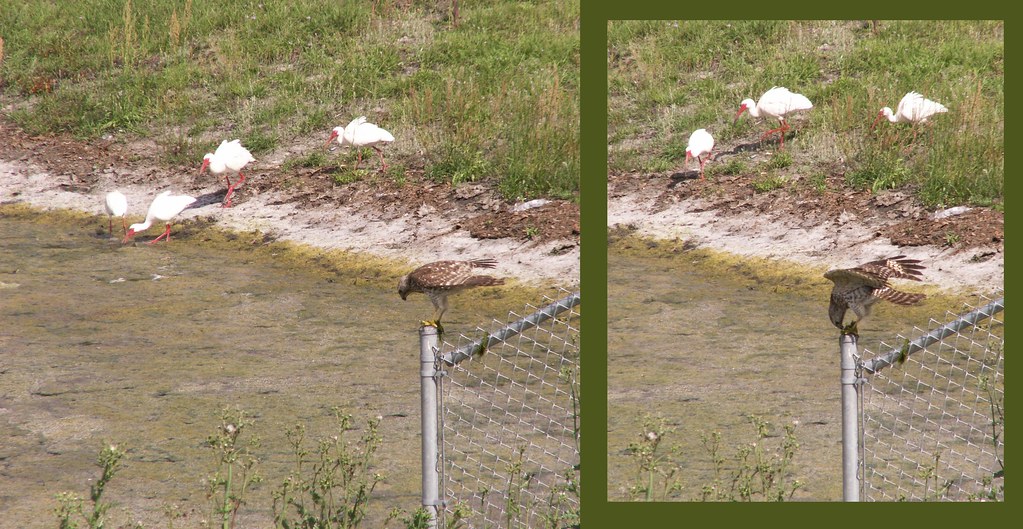
Large
Here, a juvenile red-shouldered hawk observes several ibises.
White ibises (Eudocimus albus, Family Threskiornithidae) "eat crabs and crayfish, which in turn devour quantities of fish eggs," according to eNature. "By keeping down the numbers of crayfish, the birds help increase fish populations. In addition, their droppings fertilize the water, greatly increasing the growth of plankton, the basic food of all marsh life. White Ibises gather at dusk in spectacular roosts, long lines of birds streaming in from all directions."
The hawk (Buteo lineatus, Subfamily Buteoninae (Buzzard Hawks) Family Accipitridae (Hawks, Eagles, etc.)) might be the same one I photographed at this pond eight days ago. The red-shouldered hawk includes five subspecies (four on the East Coast and one in California), according to the Cornell Lab of Ornithology. I believe this individual belongs to the pale Florida form.
Three female hooded mergansers were also in the pond:
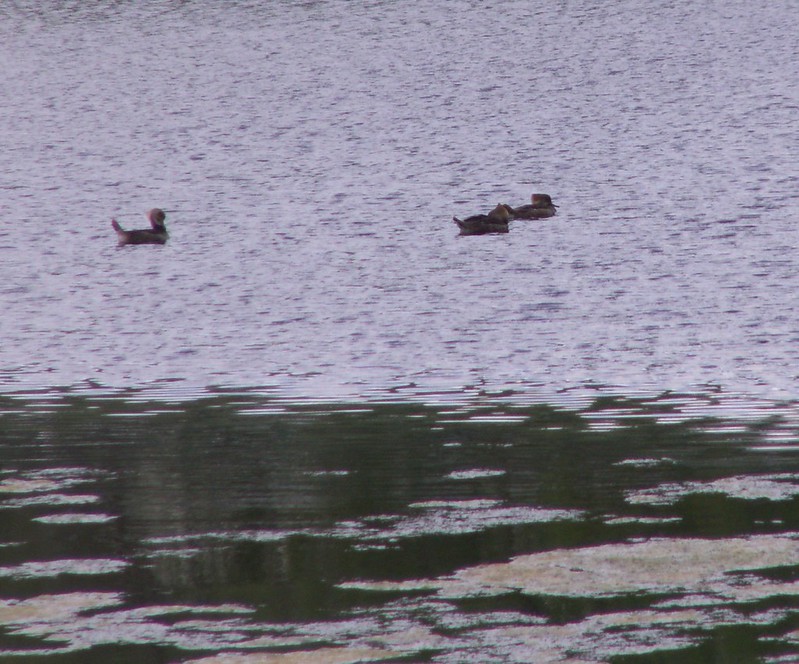
Large
Back in January we had spotted one female and three males.
"A small fish-eating duck of wooded ponds, the Hooded Merganser nests in holes in trees," according to the Cornell Lab of Ornithology. "It is frequently seen on shallow waters where its only waterfowl companion is the Wood Duck." We haven't yet spotted any wood ducks in the neighborhood.
The hooded merganser winters in Florida, but this year was the first time we've seen this species since our move here in 2003.
While some ibises fed at the pond, others flew across the road to search for grub in neighbors' lawns.
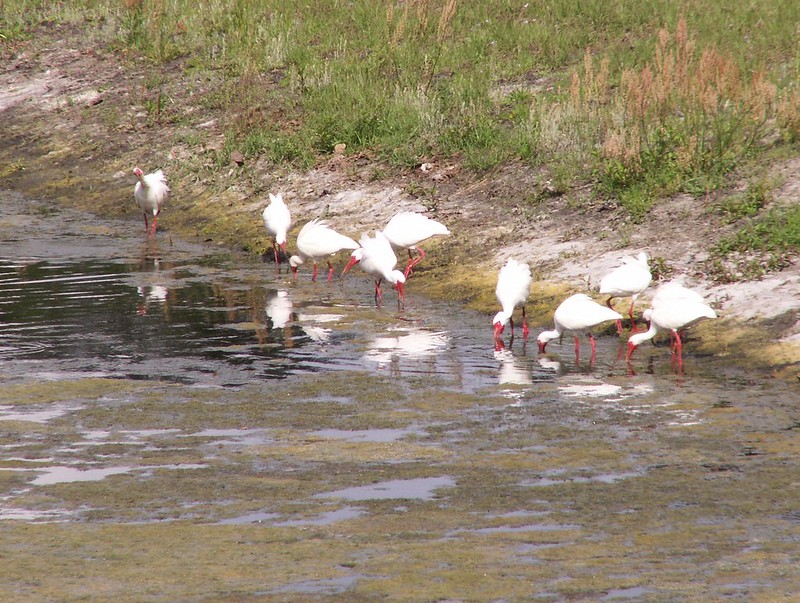
Large

Large
Make that across two roads -- the main thoroughfare, and then this side street:
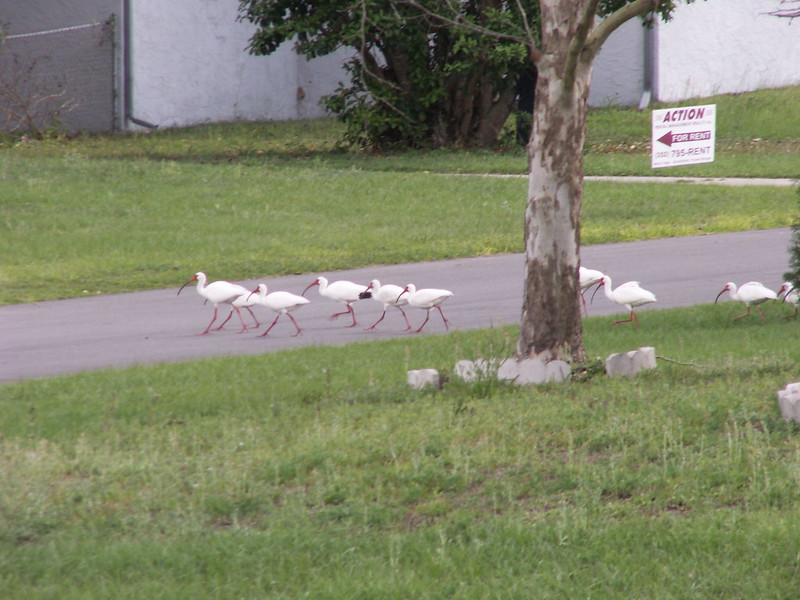
Large
They seem to follow the arrow of the "Action" sign in the upper right.
Here they are on the move!
I love these guys.
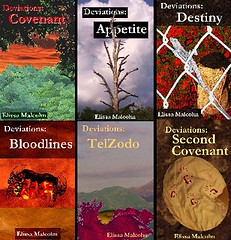












0 Comments:
Post a Comment
<< Home